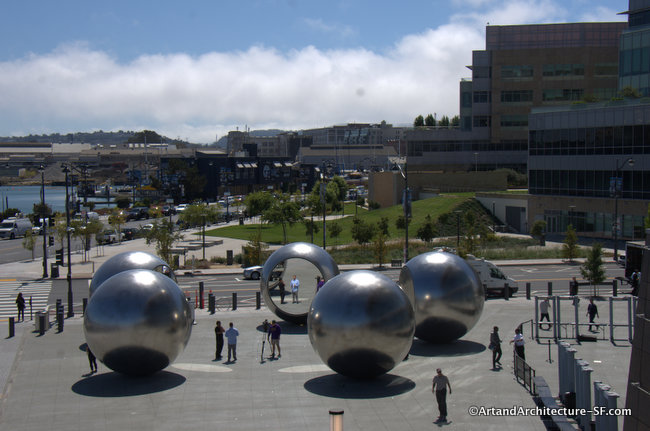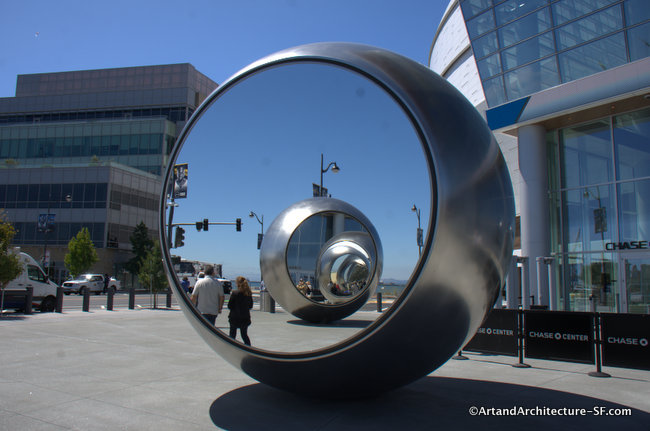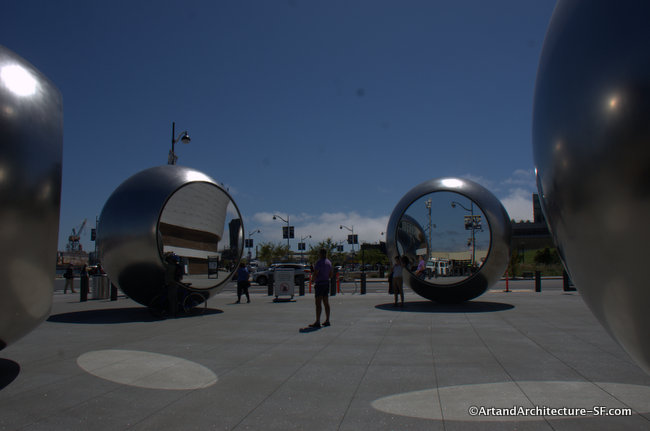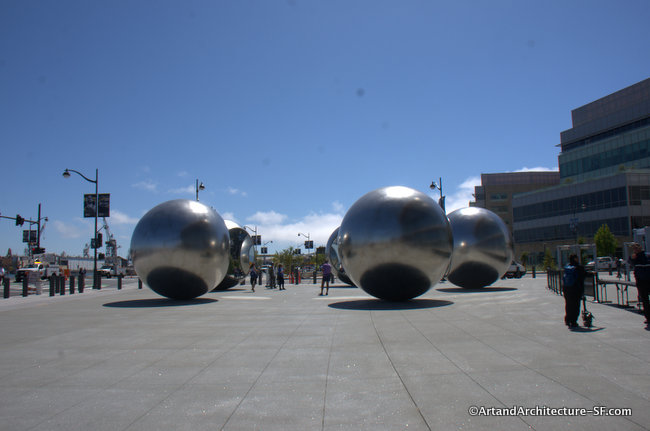Chase Center
1 South Street
Bayside Entrance
Dog Patch

Seeing Spheres by Olafur Eliasson
This work, which consists of five 15-foot polished steel balls arranged in a circle was created in Berlin, fabricated in Amsterdam, then shipped through the Panama Canal for installation.
Created using ten tons of polished steel the piece arrived by barge at the Port of San Francisco and was then trucked to Mission Bay. The work had to be done in the middle of the night as pieces were so large the moving process required temporarily removing overhead Muni wires.
 The mirrored surfaces all point towards each other creating an environment of multilayered, reflected spaces in which the objects and people appear over and over visible from various unexpected angles. Standing at different places in the center of the circle of spheres will give the viewer a unique view of either themselves or of the mirrors reflecting into each other.
The mirrored surfaces all point towards each other creating an environment of multilayered, reflected spaces in which the objects and people appear over and over visible from various unexpected angles. Standing at different places in the center of the circle of spheres will give the viewer a unique view of either themselves or of the mirrors reflecting into each other.
The mirrored front of each sphere is flat and framed in LED light, so they will faintly glow at night.
Studio Olafur Eliasson in Berlin is a full-service shop with architects, artisans and technicians, and he estimates that 120 people have worked on “Seeing spheres.” Each 15-foot orb weighs 2 tons and was formed by a hydroform process that uses water pressure to create the shape, a process popular in auto manufacturing. Eliasson says these are the largest spheres on Earth to be created by hydroform.
 Eliasson was born in 1967. He grew up in Iceland and Denmark and studied from 1989 to 1995 at the Royal Danish Academy of Fine Arts. In 1995, he moved to Berlin and founded Studio Olafur Eliasson, which today comprises more than one hundred team members, including craftsmen, architects, archivists, researchers, administrators, cooks, programmers, art historians, and specialized technicians. As a professor at the Berlin University of the Arts, Eliasson led the Institut für Raumexperimente (Institute for Spatial Experiments from 2009–2014.
Eliasson was born in 1967. He grew up in Iceland and Denmark and studied from 1989 to 1995 at the Royal Danish Academy of Fine Arts. In 1995, he moved to Berlin and founded Studio Olafur Eliasson, which today comprises more than one hundred team members, including craftsmen, architects, archivists, researchers, administrators, cooks, programmers, art historians, and specialized technicians. As a professor at the Berlin University of the Arts, Eliasson led the Institut für Raumexperimente (Institute for Spatial Experiments from 2009–2014.
This art piece is just one of ten pieces that were funded by the owners of the Chase Center through the 1% for art program, where 1% of the construction costs must go to public art. The arena cost $1.4 billion dollars.
